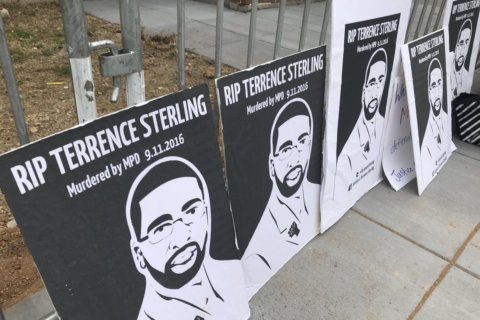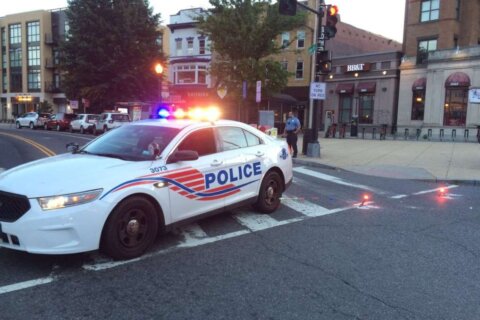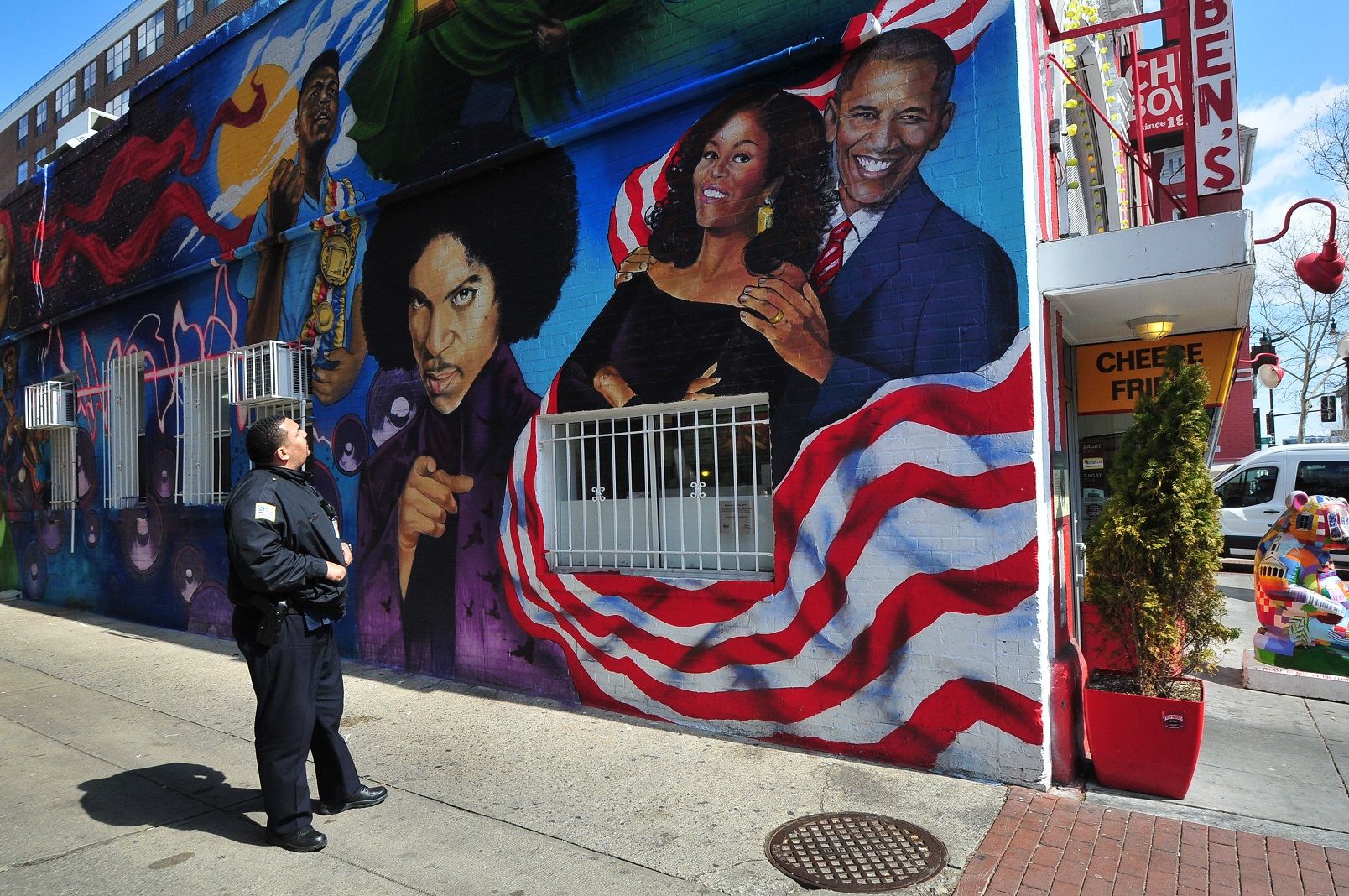
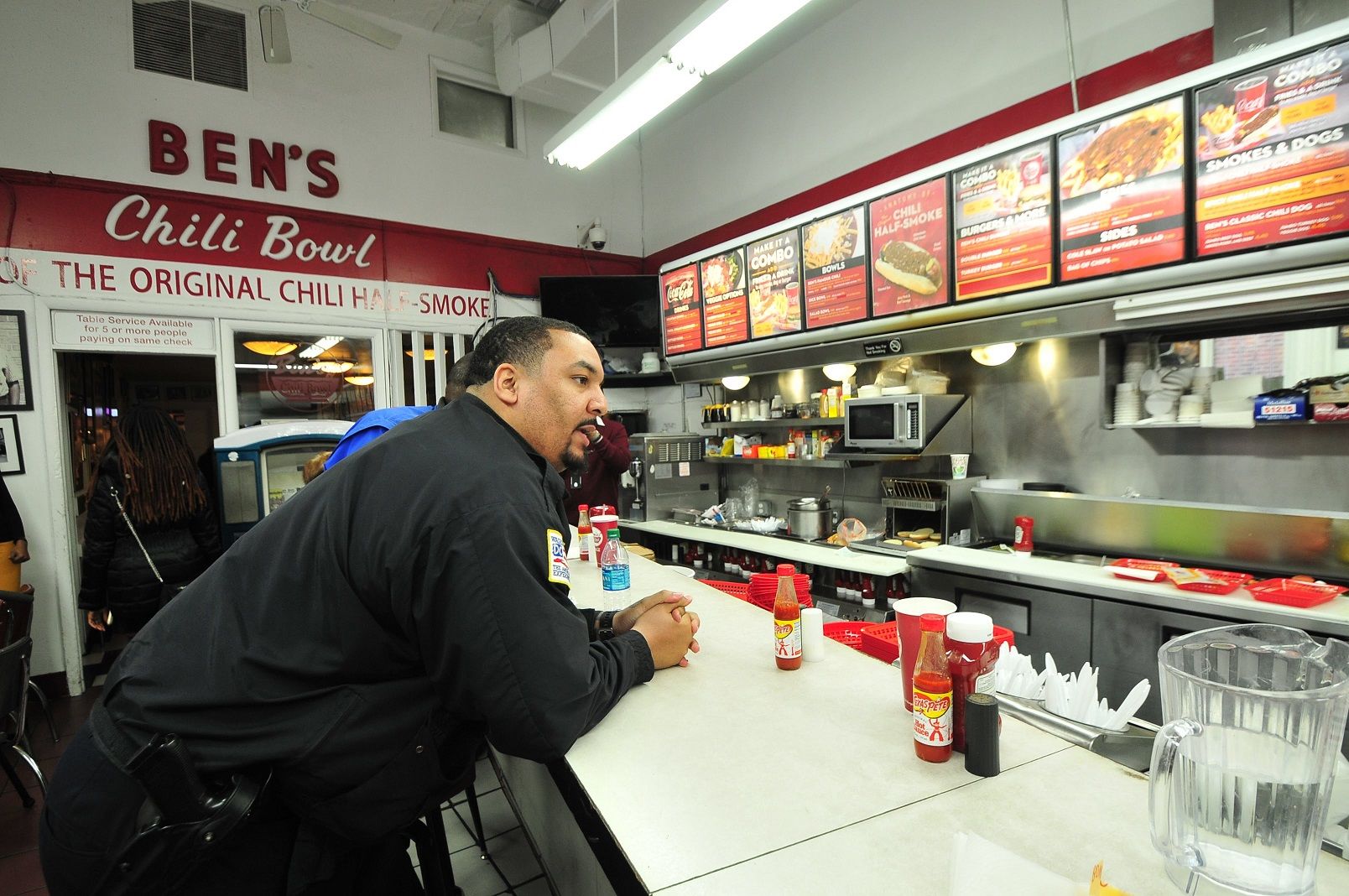
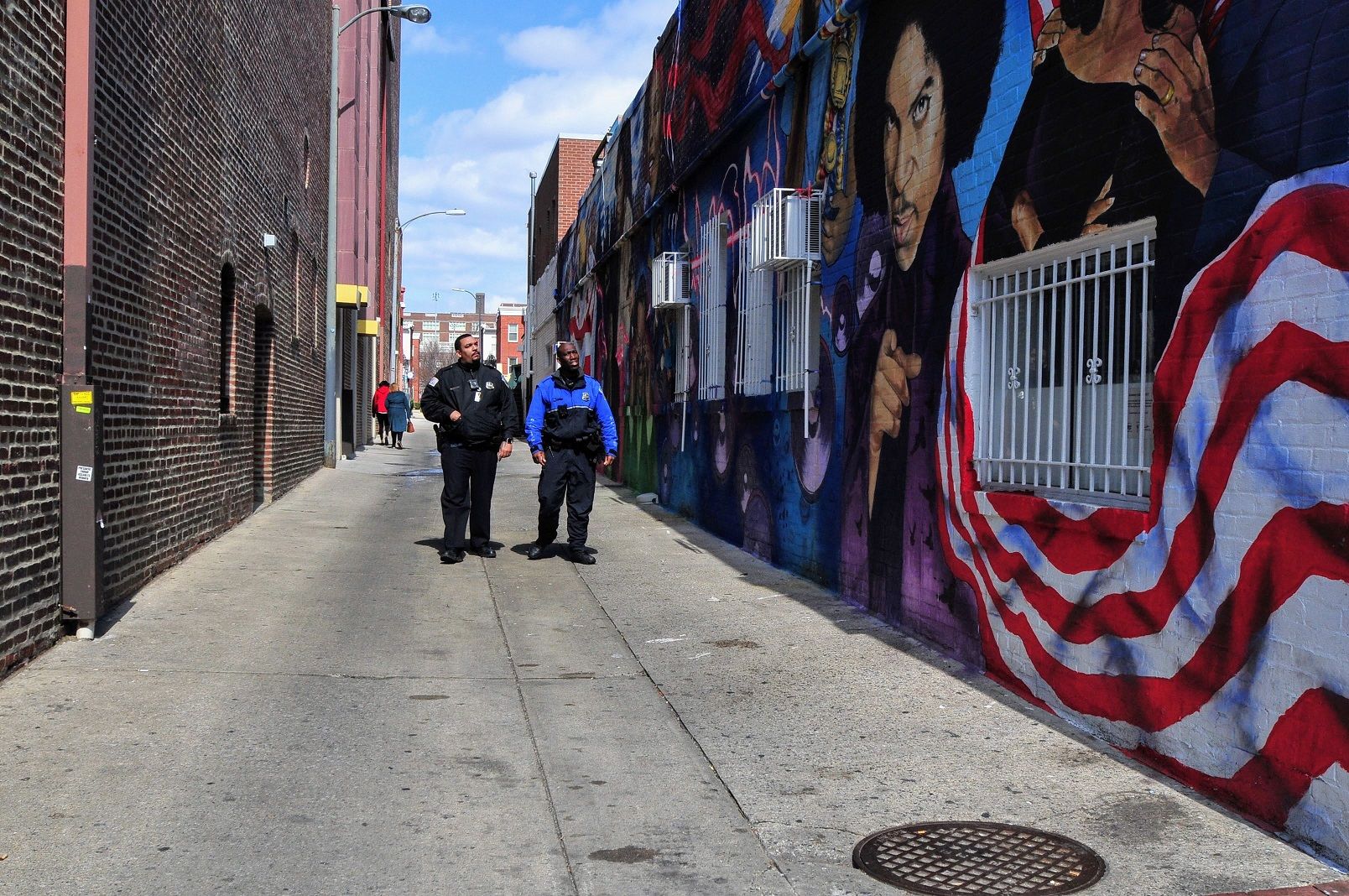

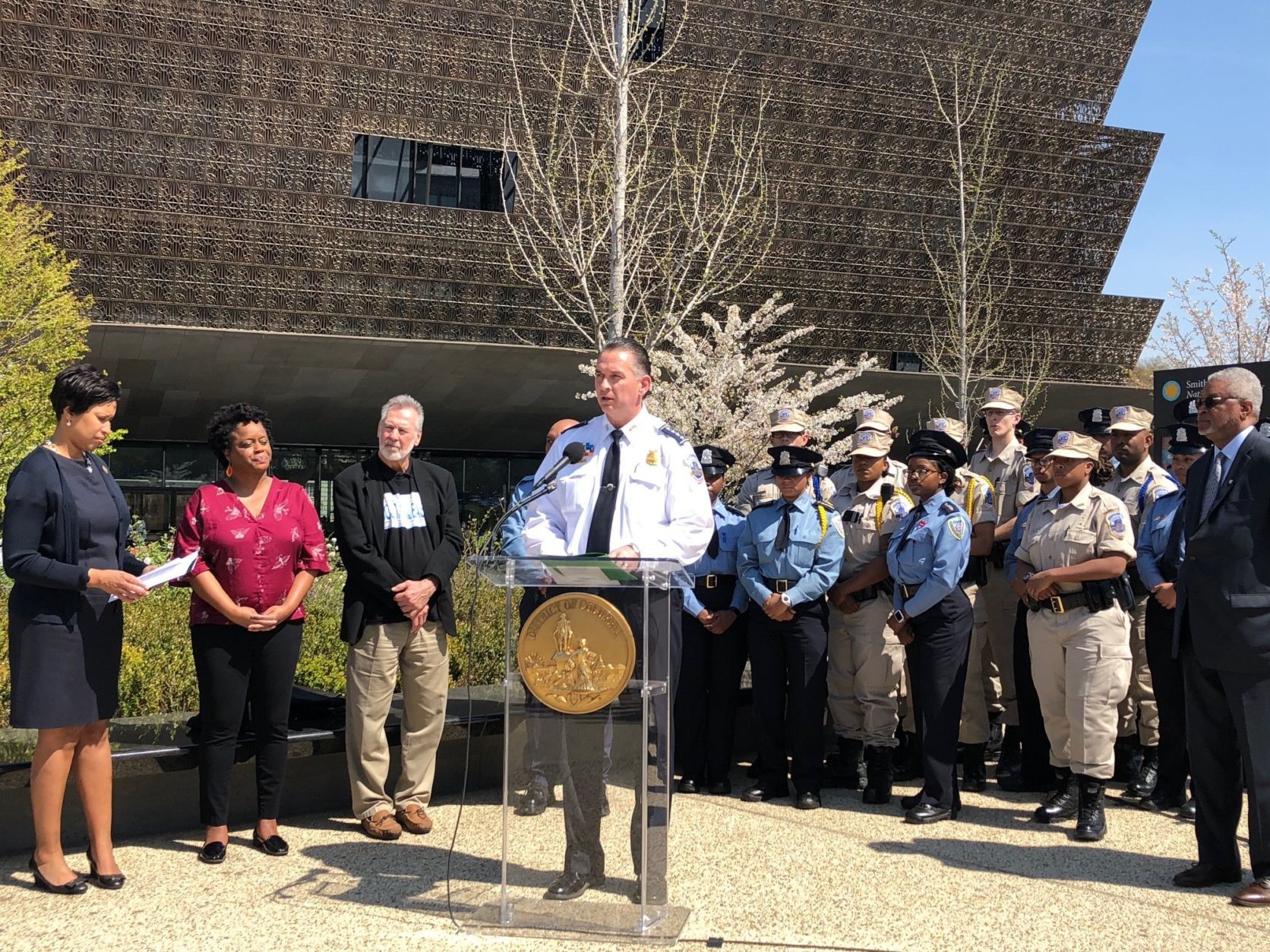
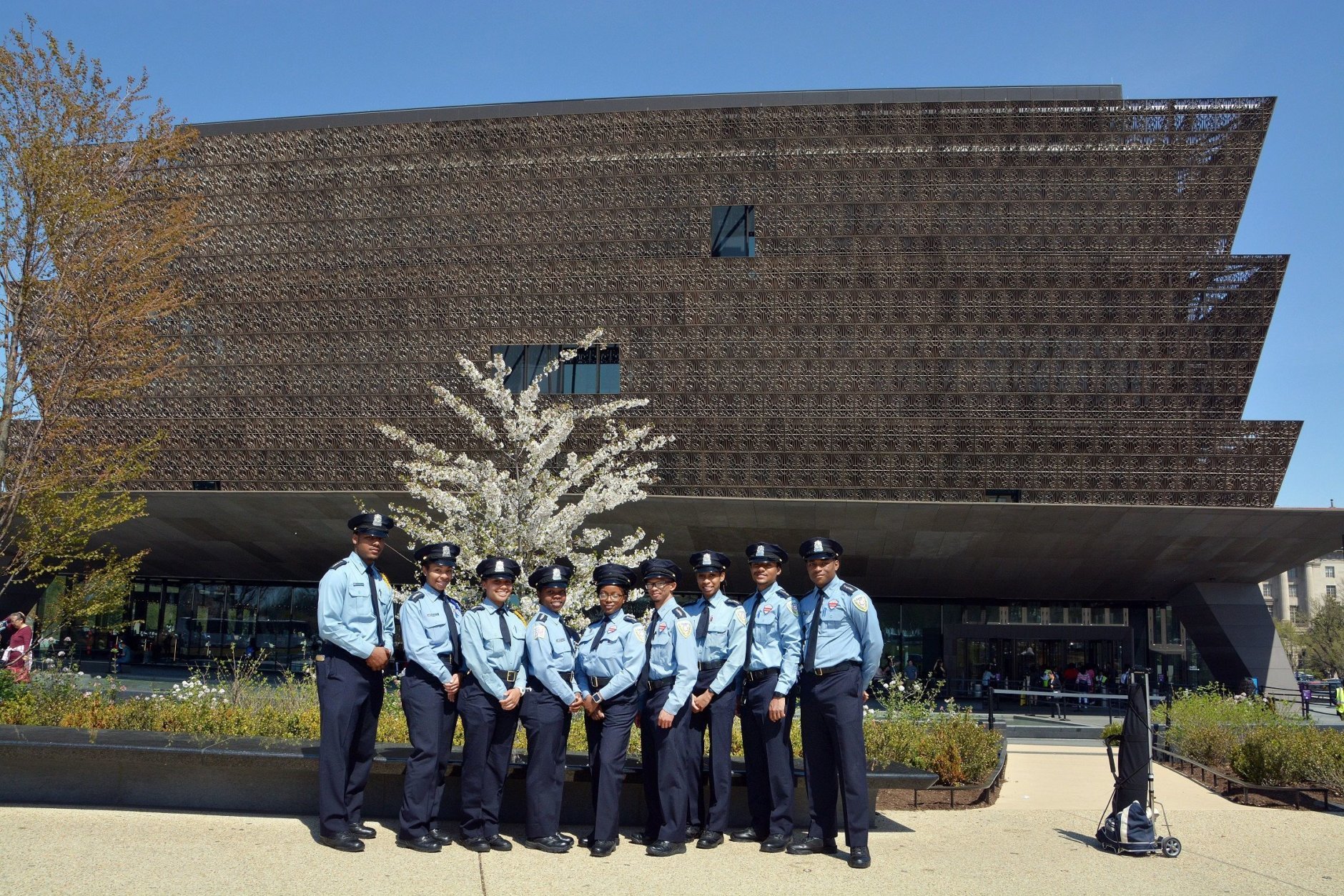
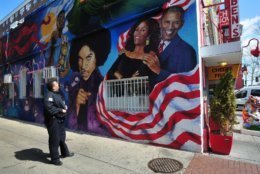
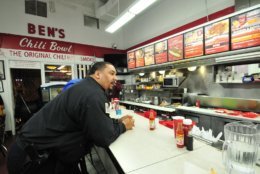
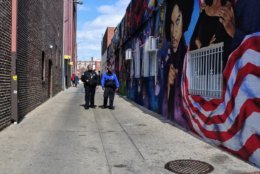
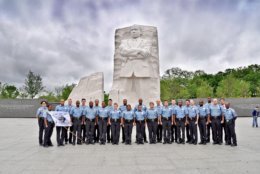
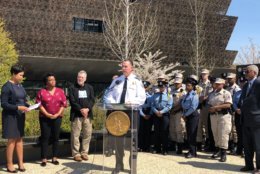
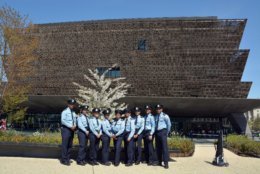
WASHINGTON — A one of its kind program in Washington aims to educate every member of D.C.’s police force on the African-American history of the city they patrol.
The department is partnering with the University of the District of Columbia Community College as well as the Smithsonian’s National Museum of African American History and Culture to improve the city’s community policing.
“I think there are some that would like to ignore that troubling history of law enforcement in our country. But, we believe it’s critically important that it remains a part of our education and understanding. And most importantly, it’s something we can learn from,” said D.C. Police Chief Peter Newsham at a news conference Friday, April 13.
Each sworn and civilian member will participate in the 10-hour program led by the college’s history professors, which begins with a tour and discussion at the museum and followed by guided neighborhood walks.
“We start at 6 a.m. for three hours of lectures that go from Africa to present day. For three hours after which, we walk here and we begin our tour at 9:30 in the morning until 3:30 in the afternoon,” said professor Bernard Demczuk.
“We also take officers on to a U Street tour where we spend four or five hours in the Shaw community examining police brutality, examining history, examining the black Mecca of America, Washington, D.C. and the black Broadway along U Street; and the officers get a real good sense of D.C. history, D.C. policing and how we here are changing policing in America,” Demczuk said.
“The community is more diverse, more cultural. You have to be more aware of that and police that way. You know, everybody wants to be heard and has a different story; and everybody is not the same,” said Master Police officer Curtis Coleman, who trains cadets at the D.C. Police Academy.
Coleman is one of a few officers who goes through the training with the groups of civilian and sworn officers — often comprising those both new to the department and others further along in their careers.
“They can give you some history of what they have gone through and you try to give them a sense of what you know about Washington, D.C. to kind of give them that blanket of comfort to say, ‘Hey, when we release you out of the academy, we want you to be a well-rounded officer and have an understanding.’ There is so much Washington has to offer,” Coleman said.


